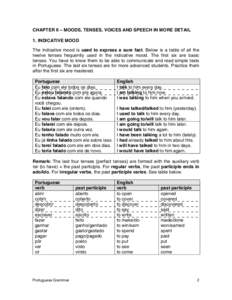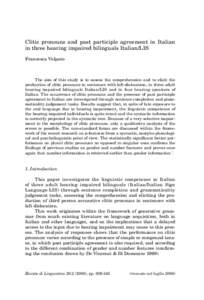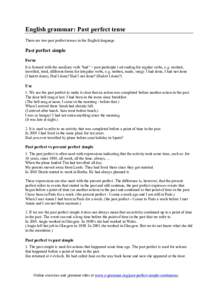<--- Back to Details
| First Page | Document Content | |
|---|---|---|
 Date: 2014-04-13 10:51:09Grammatical tenses Portuguese grammar Portuguese personal pronouns Subjunctive mood Present tense Brazilian Portuguese Imperfect Present perfect Past tense Participle Continuous and progressive aspects Verb |
Add to Reading List |
 CHAPTER II – MOODS, TENSES, VOICES AND SPEECH IN MORE DETAIL 1. INDICATIVE MOOD The indicative mood is used to express a sure fact. Below is a table of all the twelve tenses frequently used in the indicative mood. The
CHAPTER II – MOODS, TENSES, VOICES AND SPEECH IN MORE DETAIL 1. INDICATIVE MOOD The indicative mood is used to express a sure fact. Below is a table of all the twelve tenses frequently used in the indicative mood. The 



